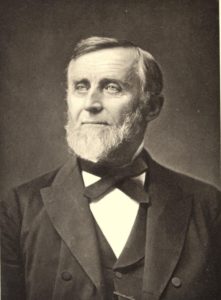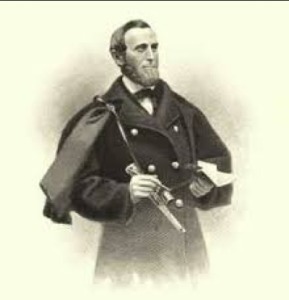Boscawen’s Historical Author, and more
By: Elaine Clow

Charles Coffin’s formal education was limited to the local district school near his home on Water Street, the Academy on the Plain (now the Boscawen Historical Society building), and one term at Blanchard academy in Pembroke, supplemented by extensive reading and self-tutoring. During the winter of 1842, he took up the study of land surveying and the rudiments of civil engineering. In 1845, he joined the engineer corps making the preliminary surveys of the Northern Railroad and was later employed in its construction.
On February 18, 1846, Charles Coffin married Miss Sallie Russell Farmer, daughter of Col. John Farmer, and bought a farm of his own in 1848. He soon found that failing health was an obstacle to any success and returned to his previous career as a civil engineer. In the fall of 1849 he constructed the telegraphic time line between Harvard’s Astronomical observatory and Boston’s main railway station. In 1851, he was in charge of the construction of Boston’s first telegraphic fire alarm and sent out the first signal over the system on April 29, 1852.
Coffin’s journalistic career began by writing for several New Hampshire newspapers and journals, and he began contributing articles to Boston newspapers in 1851. From 1855 to 1860, he held several positions with the Boston newspapers “Journal,” “Atlas,” and “Traveller.” During the last year before the war, Mr. Coffin served as a reporter for the Boston Journal, traveling to Canada to cover the visit of Britain’s Prince of Wales – the future King Edward VII after Queen Victoria died.
Mr. Coffin attended both the Democratic and Republican Party conventions that chose candidates for the 1860 election. He spent the last winter before the war, 1860-1861, as the Journal’s Night Editor, preparing much of its reporting on the election won by Abraham Lincoln.

After the war in 1866, Mr. Charles Carleton Coffin and his wife embarked on a global expedition, and he entered a further most prolific career as a historian/storyteller. I discovered Charles Carleton Coffin in the form of a huge stack of his books in the Boscawen Historical Society Library. “Hmm, I wonder if he is still readable,” say I to myself. My first choice to ponder, chosen at random: “The Story of Liberty” published in 1888, opening at the Magna Carta, with selection of significant turning points of history ending at the first Thanksgiving in the new world. It is well-written and readable. While not a serious study of actual history, he provides an entertaining interpretation of what might or might not have happened amongst the people involved during some of the changing ideology of western civilization, including the printing press, the Spanish Inquisition, Henry VIII and his various wives, and the reformation.
Young adults of more than a hundred years ago gained an understanding about where and how some of the concepts leading to current political and religious thought originated, though some of his deliberations were of that day, and not necessarily politically correct in today’s society. I would recommend this book to anyone interested in the progression of political thought and concept, though with the caveat that often his conjecture becomes “we know,” through a leap of faith, rather than documentation of his data. His books spoke mostly to the youth of the United States, with supporting resources presented in the form of copious drawings, diagrams, glossaries, maps, plates, and illustrations that do provide wonderful information, substance, and side tangents to explore independently.
Though he died in 1896, shortly after his and Sallie’s Golden Wedding Anniversary, Mr. Coffin’s numerous books are still in reprint editions, and collected in The Gutenberg Project and Open Library websites. Most can be read on-line for no fee at the http://openlibrary.org/search?q=charles+carleton+coffin website and through http://www.archive.org/search.php?query=charles%20carleton%20coffin. They are also available in both new and used copies through Amazon.com. Mr. Coffin is the creator of Coffin’s History of Boscawen and Webster published in 1878.
A partial list of his works:
Eyewitness to Gettysburg
Caleb Crinkle
Following the Flag
The History of Boscawen and Webster
Marching to Victory
Our New Way Round the World
The Boys of ‘61
Winning His Way
The Seat of Empire
Abraham Lincoln
Four Years of Fighting: A Volume of Personal Observations with the Army and the Navy
My Days and Nights on the Battlefield
The Story of Liberty
The Great Commercial Prize
Dan of Millbrook
BIOGRAPHY: Charles Carleton Coffin, War Correspondent, Traveler, Author, and Statesman, by William Elliot Griffis 1843-1928 (Also available on line)
Elaine Clow is Librarian at the Boscawen Historical Society. The next book she will read that was written by Mr. Charles Carleton Coffin will be Our New Way Round the World, the story of Mr. and Mrs. Coffin’s world trip begun in 1866. Not bad for a homespun boy who grew up at what is now 170 Water Street in our town, is it?
Special thanks go to Jim and Sue Richardson of Richardson’s Orchard and Farm Stand, 170 Water Street, for finding and moving the Town of Boscawen commemorative stone and plaque for Charles Carleton Coffin, and providing it prominent display.